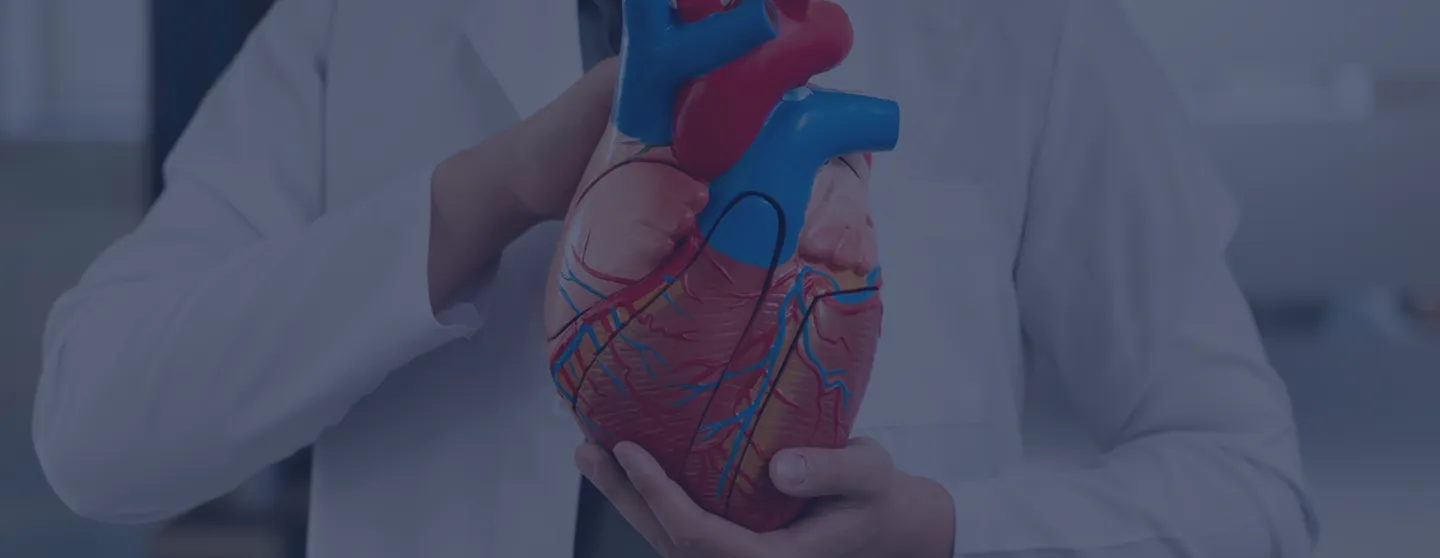
PDA Closure

About
What is PDA Closure Procedure?
Patent Ductus Arteriosus (PDA) is a heart condition where a blood vessel called the ductus arteriosus remains open after birth. This creates an abnormal connection between the aorta and the pulmonary artery, allowing extra blood to flow into the lungs. Over time, this can strain the heart, raise lung pressure, and lead to symptoms like fast breathing, poor weight gain, or even heart failure.
PDA closure is a medical procedure that seals this opening to restore normal blood circulation. Today, most PDA closure procedures are performed using a catheter-based technique, where a small device is delivered through a vein in the groin to close the PDA. This PDA closure procedure in Mumbai is minimally invasive, safe, and allows for a quicker recovery compared to traditional surgery.

How It's Done
How is PDA Closure Done?
A small incision is made in the femoral vein in the groin.
A catheter is guided into the heart and towards the PDA using fluoroscopy and echocardiography.
The size and position of the PDA are measured precisely.
A specialized PDA device closure procedure is performed, where a self-expanding device is positioned to block the abnormal opening.
Once correctly placed, the device is released, and tissue gradually grows over it.
The catheter is withdrawn, and the groin site is sealed with a stitch or dressing.
Who it’s for?
Who Needs PDA Closure?
PDA closure is recommended in patients who meet one or more of the following criteria:
Infants with large PDA causing heart strain or breathing issues
Premature babies where PDA affects feeding or oxygen levels
Children diagnosed with PDA during routine heart check-ups
Adults with undetected PDA showing fatigue or shortness of breath
Patients at risk of heart infection (endocarditis) due to PDA
Those with heart enlargement or lung overload from PDA shunting
Women planning pregnancy with a known PDA
Anyone advised closure after PDA is confirmed on echocardiogram

Benefits of PDA Closure
What are the Benefits of PDA Device Closure?
Improved breathing
Reduces excess blood flow to the lungs, easing breathing effort
Better weight gain
Enhances feeding tolerance and supports healthy growth in infants
Heart protection
Prevents long-term strain on the heart and reduces the risk of heart failure
Lower lung pressure
Helps avoid pulmonary hypertension caused by prolonged PDA
Minimally invasive recovery
Catheter-based PDA closure procedure ensures faster healing with minimal discomfort
Reduced infection risk
Lowers the chances of endocarditis by closing the abnormal blood vessel
Normal circulation restored
Eliminates abnormal flow between the aorta and pulmonary artery
Outcomes of Procedure Delay
Risks of Delay of PDA Closure
- Pulmonary hypertension due to prolonged extra blood flow to the lungs
- Heart enlargement and potential heart failure from volume overload
- Increased risk of infective endarteritis from abnormal blood vessel flow
- Poor feeding, slow weight gain, and delayed growth in infants
- Reduced exercise capacity and stamina in older children or adults


Procedure Timeline
Recovery & Follow-Up Timeline
Hospital Stay
Usually 1-2 days for catheter-based PDA closure surgery
Activity Resumption
Most children can return to normal activities within 1 week
Follow-Up Care
Regular checkups to monitor device position and overall heart function
Pain Management
Mild discomfort may occur, usually managed with over-the-counter medication
Long-Term Outlook
Excellent recovery with low risk of complications when treated timely
What Sets us Apart
Why Choose Heart Valve Experts?
Specialized PDA Closure Team
We offer catheter-based PDA closure procedures with consistently high success rates.
Tailored Device Choice
We use advanced PDA closure devices selected based on your child’s size and heart anatomy.
Pediatric Expertise
Our team has extensive experience managing PDA in infants, newborns, and children.
Precision Imaging
All procedures are guided by state-of-the-art imaging to ensure accurate and safe outcomes.
Low Complication Rates
Minimally invasive approach means fewer risks and a quicker recovery.
Skilled Cardiology Team
Our interventional cardiologists in Mumbai are trusted experts in PDA management.
End-to-End Care
We provide personalized support from diagnosis through post-procedure follow-up.
Patient Success Stories
Every success story begins with the right care. Here are a few:
“Doctors performed my father’s TAVI procedure successfully and explained everything with great care. Truly grateful for his expertise and compassionate team.”
MRS. PREETI MANOHARAN
FAQs

